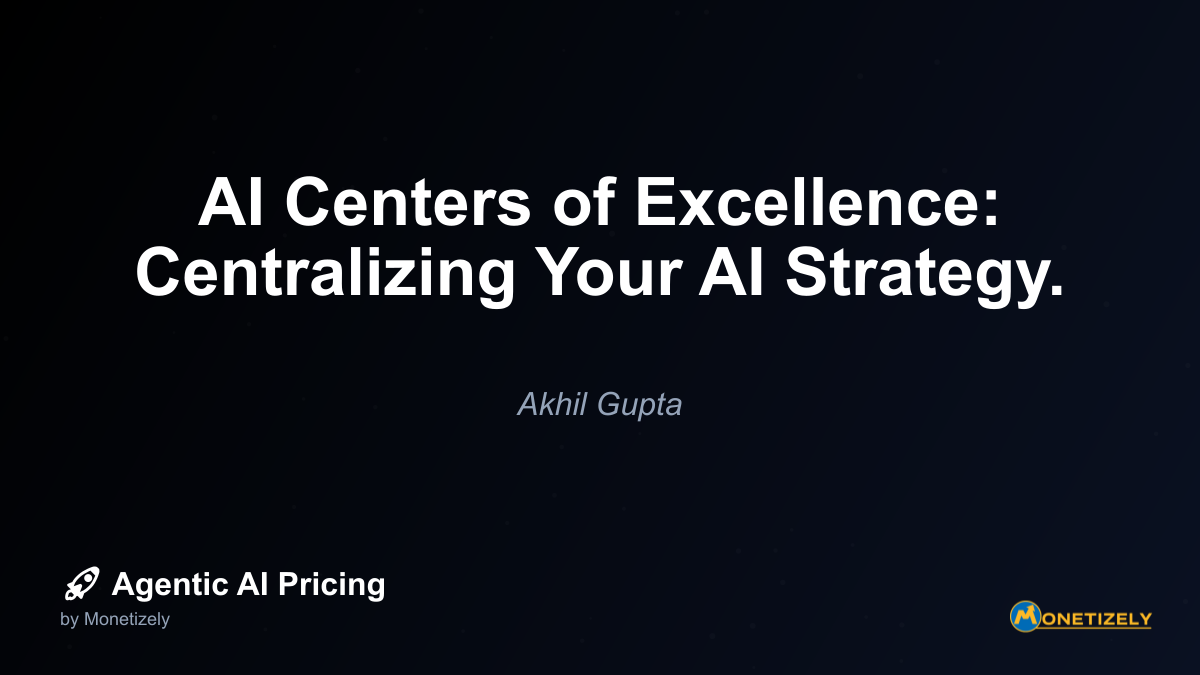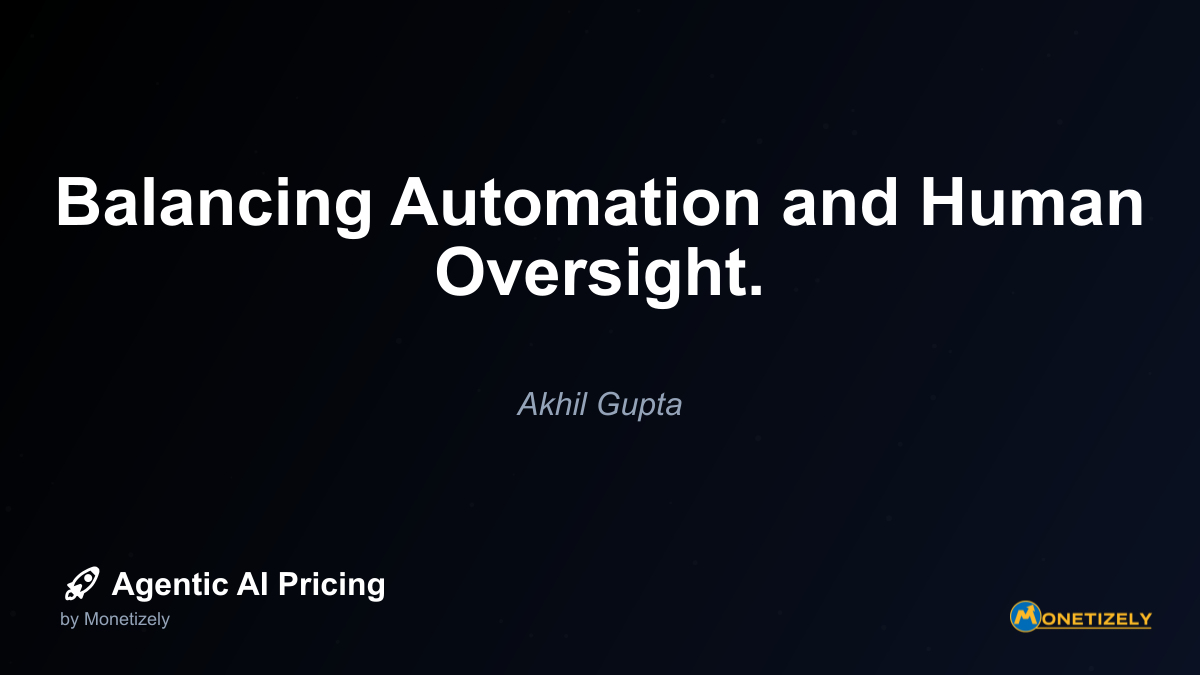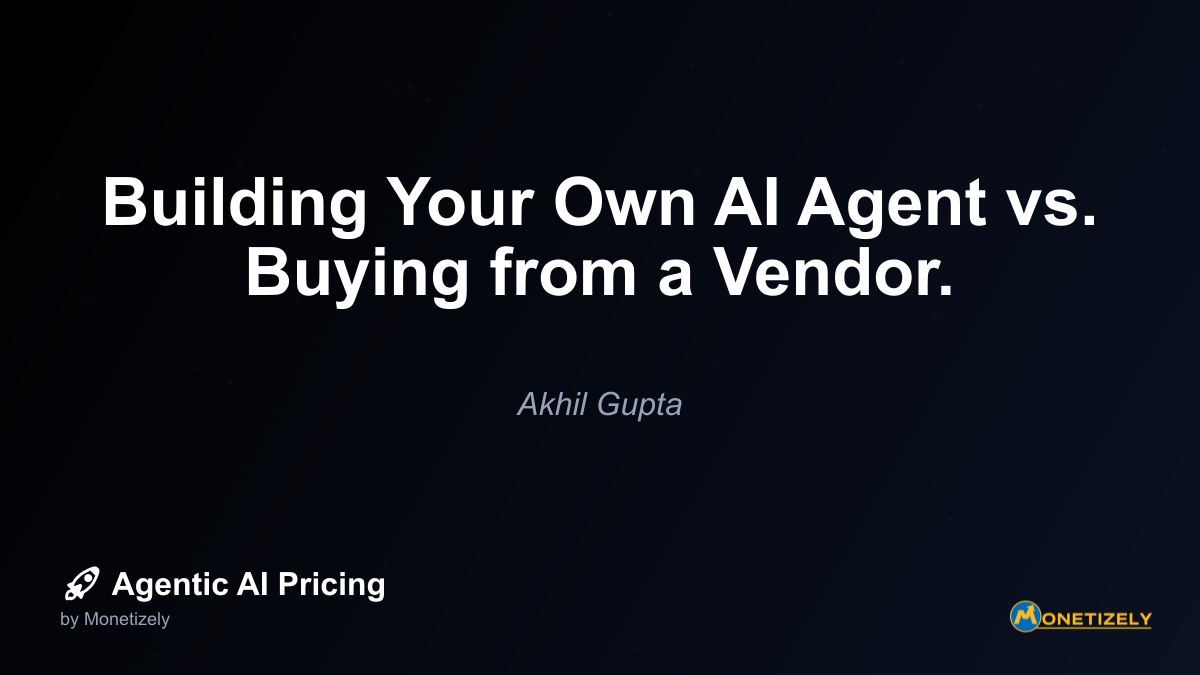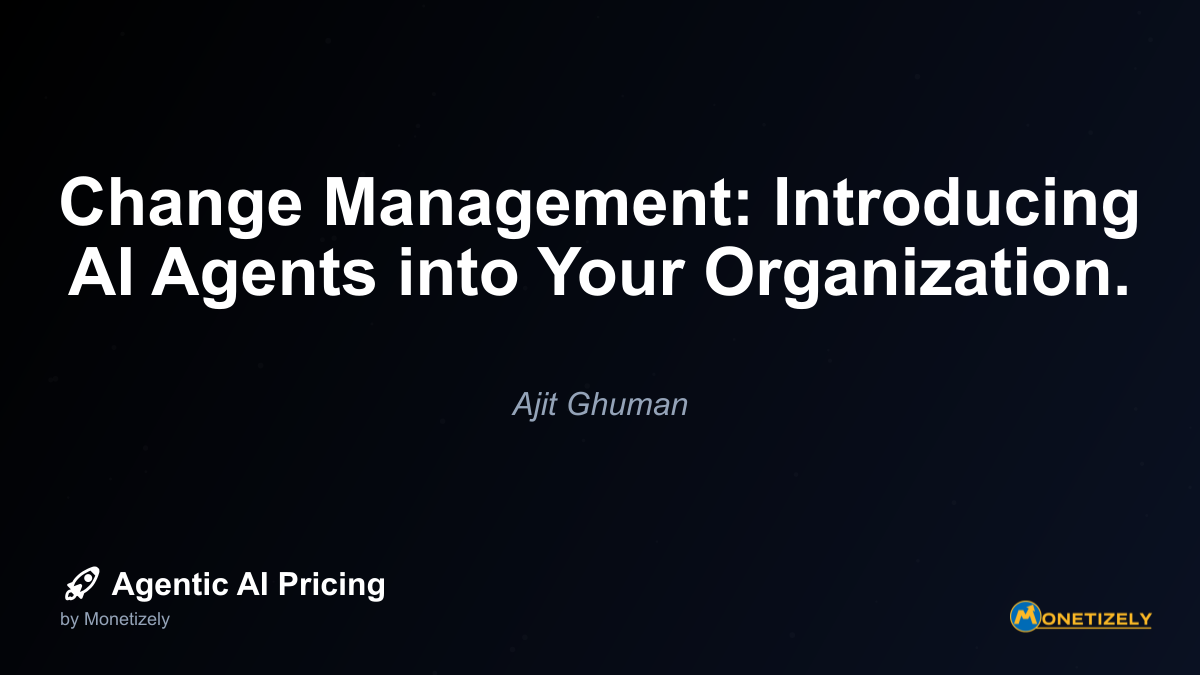· Akhil Gupta · Implementation Strategies · 9 min read
Budgeting for AI Projects: Cost Components to Include.
AI and SaaS Pricing Masterclass
Learn the art of strategic pricing directly from industry experts. Our comprehensive course provides frameworks and methodologies for optimizing your pricing strategy in the evolving AI landscape. Earn a professional certification that can be imported directly to your LinkedIn profile.
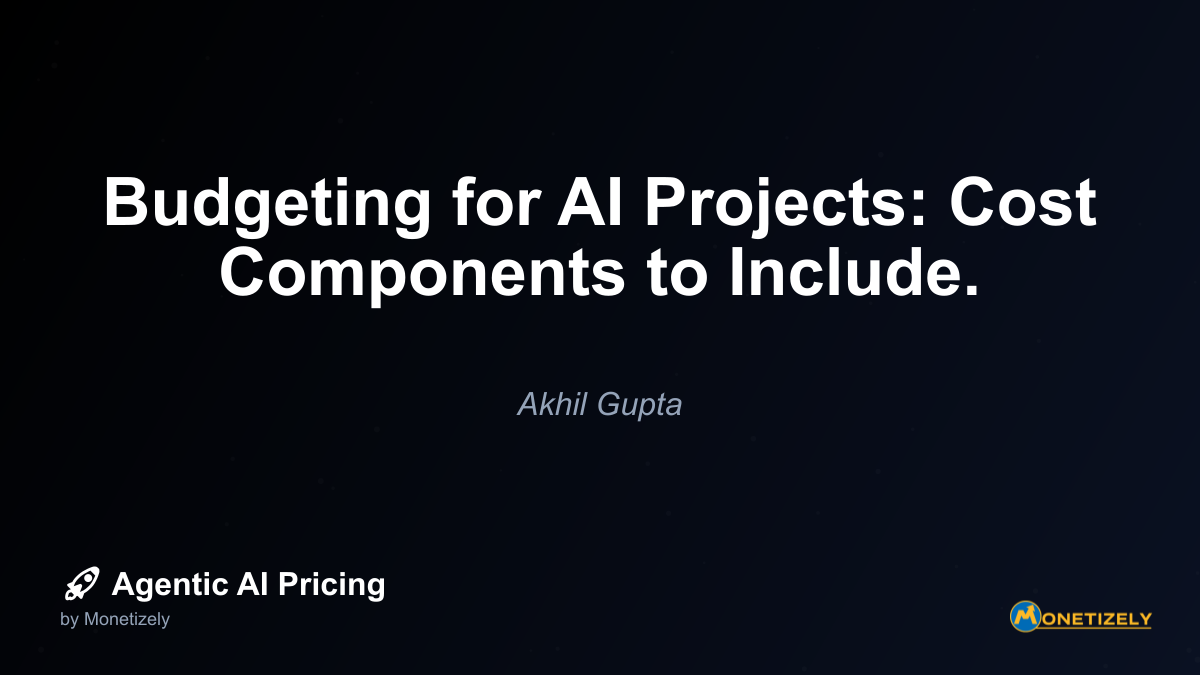
Implementing AI agents in your business operations promises significant benefits, but proper budgeting is essential to avoid unexpected costs. While the potential for efficiency gains and new capabilities is compelling, organizations often underestimate the full financial commitment required for successful AI implementation. Understanding all cost components from the outset allows for realistic planning and prevents budget overruns that can undermine even the most promising AI initiatives.
Understanding the True Cost of AI Projects
When organizations embark on AI implementation, they frequently focus on the most visible expenses—software licenses or subscription fees. However, these represent only a fraction of the total cost of ownership. A comprehensive AI budget must account for initial implementation, ongoing operational costs, and the resources required to maximize adoption and value.
According to research by Gartner, organizations that fail to properly budget for AI projects typically underestimate costs by 40-60%. This budgeting shortfall often leads to scaled-back implementations, delayed timelines, or complete project abandonment. By understanding all cost components in advance, you can build a realistic financial roadmap for your AI initiative.
Core Cost Components of AI Agent Implementation
Vendor Fees and Subscriptions
The most straightforward component of your AI budget is the direct cost of the technology itself. These expenses typically fall into several categories:
Software Licensing Models:
- Perpetual licenses: One-time purchase with ongoing maintenance fees
- Subscription-based: Monthly or annual fees based on users, features, or usage
- Consumption-based: Pay for what you use (API calls, compute time, etc.)
Pricing Tiers and Considerations:
- User-based pricing: Costs scale with the number of employees using the system
- Feature-based pricing: Premium capabilities require higher-tier subscriptions
- Volume-based pricing: Costs tied to usage metrics like queries, documents processed, or compute hours
When evaluating vendor costs, look beyond the headline price. Many vendors offer attractive initial rates that increase substantially after the first year or once usage exceeds certain thresholds. Request a detailed breakdown of all fees, including any potential charges for exceeding usage limits, additional modules, or premium support.
Cloud Infrastructure and Computing Resources
AI systems—particularly those involving machine learning or large language models—can be computationally intensive. The infrastructure needed to support these systems represents a significant cost category:
Hosting Options:
- Public cloud (AWS, Azure, Google Cloud): Pay-as-you-go model with potential for significant variation based on usage
- Private cloud: Higher control but typically requires greater upfront investment
- On-premises: Maximum control and security but highest initial capital expenditure
Infrastructure Components:
- Compute resources: CPU/GPU instances for model training and inference
- Storage: For training data, model artifacts, and operational data
- Networking: Data transfer fees and bandwidth costs
- Specialized AI accelerators: TPUs or custom hardware for specific workloads
Cloud costs can be particularly difficult to predict for AI workloads. Training models or running complex inference at scale can generate substantial computing expenses. Implementing proper governance and monitoring of cloud resources is essential to prevent unexpected bills. Consider reserved instances or committed use discounts for predictable workloads to reduce costs by 20-40% compared to on-demand pricing.
Integration and Implementation Services
Connecting AI agents to existing systems and workflows often requires significant technical work:
Integration Types and Costs:
- API integration: Connecting AI systems to existing applications and data sources
- Custom development: Building specialized interfaces or features
- Workflow redesign: Modifying business processes to incorporate AI capabilities
Implementation Resources:
- Internal IT staff time: Often underestimated but represents a real opportunity cost
- External consultants: Specialized expertise for complex implementations
- System integrators: End-to-end implementation partners for enterprise-scale projects
Integration costs frequently exceed the direct software expenses, particularly for organizations with complex IT environments or legacy systems. Budget for 1.5-3x the cost of the software itself for integration work. These costs can be reduced through selecting AI solutions with pre-built connectors for your existing systems or by phasing implementation to spread expenses over time.
Data Preparation and Quality Management
AI systems are only as good as the data they’re trained on and have access to. Preparing this data represents a substantial investment:
Data Requirements:
- Historical data collection and organization
- Data cleaning and normalization
- Annotation and labeling for supervised learning
- Synthetic data generation for edge cases
Ongoing Data Management:
- Data governance frameworks
- Quality monitoring and maintenance
- Compliance and privacy controls
- Storage and version management
Organizations consistently underestimate the time and resources required for proper data preparation. In many projects, data work can consume 60-80% of the total implementation effort. This is particularly true for custom AI models that require organization-specific training data. Even with pre-trained models, significant work is often needed to prepare your business data for effective use with the AI system.
User Training and Change Management
The success of AI implementations depends heavily on user adoption, which requires investment in training and change management:
Training Components:
- End-user training on new interfaces and workflows
- Administrator training for system management
- Developer training for API usage and customization
- Executive education on capabilities and limitations
Change Management Resources:
- Communication campaigns
- Champions and super-user programs
- Documentation and knowledge base development
- Incentive programs for adoption
The human side of AI implementation is frequently underfunded, leading to poor adoption and limited return on investment. Set aside 5-10% of your total project budget for training and change management. Remember that different user groups will require different approaches—executives need high-level understanding, while daily users need hands-on practice with the specific features relevant to their roles.
Ongoing Support and Maintenance
AI systems are not “set and forget” technologies. They require continuous attention and resources:
Technical Support:
- Vendor support contracts and service level agreements
- Internal helpdesk resources
- Technical troubleshooting capacity
- System monitoring and alerting
AI Performance Management:
- Model monitoring and evaluation
- Retraining and updating models
- Performance tuning and optimization
- Bias detection and mitigation
Governance and Compliance:
- Ethical oversight committees
- Regulatory compliance monitoring
- Audit preparation and response
- Documentation maintenance
Ongoing costs typically range from 15-30% of the initial implementation cost annually. These expenses are essential for maintaining system performance and adapting to changing business needs. Neglecting ongoing support often leads to declining system effectiveness and eventual abandonment of the technology.
Hidden Costs to Anticipate
Beyond the major categories above, several less obvious costs can impact your AI budget:
Opportunity Costs During Implementation
During implementation, key staff members may be diverted from their regular duties. This opportunity cost should be factored into your planning:
- IT staff time allocation
- Subject matter expert involvement
- Executive oversight and decision-making
- Productivity impacts during transition periods
These costs are rarely reflected in project budgets but represent real financial impact to the organization. Consider temporary staff augmentation or project prioritization to mitigate these effects.
Scaling and Expansion Expenses
As AI adoption grows within your organization, costs will scale accordingly:
- Additional user licenses
- Expanded infrastructure
- New use case development
- Cross-departmental expansion
Initial budgets should account for likely growth scenarios to avoid funding surprises. Many organizations begin with pilot implementations that demonstrate value before expanding, which can help manage financial risk but may increase total cost compared to enterprise-wide deployment from the start.
Security and Compliance Requirements
AI systems often interact with sensitive data, triggering security and compliance needs:
- Enhanced security measures
- Privacy impact assessments
- Regulatory compliance verification
- Audit and documentation requirements
These requirements vary by industry and geography, but can add 10-15% to project costs in regulated environments. Healthcare, financial services, and government sectors typically face the highest compliance-related expenses.
Building Your AI Project Budget
Phase-Based Budgeting Approach
Rather than creating a single budget for the entire AI initiative, consider a phased approach:
Discovery and Planning Phase:
- Needs assessment
- Vendor evaluation
- Proof of concept development
- Initial architecture design
Implementation Phase:
- Software acquisition
- Infrastructure setup
- Integration development
- Data preparation
- Initial training
Operational Phase:
- Ongoing subscriptions
- Support and maintenance
- Continuous improvement
- Expansion to new use cases
This approach allows for more accurate budgeting as each phase provides information that improves estimates for subsequent phases. It also creates natural decision points where the project can be evaluated before additional funds are committed.
Setting Realistic Contingencies
AI projects involve numerous uncertainties. Appropriate contingency planning is essential:
- Technical complexity: 15-25% contingency
- Data quality issues: 20-30% contingency
- Integration challenges: 20-25% contingency
- Adoption uncertainties: 10-15% contingency
Overall project contingencies typically range from 15-30% of the base budget, depending on organizational experience with AI and the complexity of the implementation. These reserves should be formally included in project budgets and governed through change management processes.
ROI Considerations for AI Budgeting
While thorough budgeting focuses on costs, the ultimate goal is to deliver business value. Your budget planning should include ROI analysis:
Quantifiable Benefits
- Labor cost reduction
- Process acceleration
- Error reduction
- Increased throughput
- Customer retention improvements
Qualitative Benefits
- Improved decision quality
- Enhanced customer experience
- Employee satisfaction and retention
- Competitive differentiation
- Innovation enablement
The most successful AI implementations maintain focus on specific business outcomes rather than technology capabilities. Ensure your budget justification includes clear connections between expenditures and expected returns, with measurable success criteria.
Practical Budgeting Strategies for Different Organization Types
Enterprise Approaches
Large organizations typically benefit from comprehensive approaches:
- Center of Excellence model with shared resources
- Enterprise-wide AI governance frameworks
- Standardized budgeting templates
- Portfolio management across multiple AI initiatives
This approach enables economies of scale and knowledge sharing but requires significant coordination and may slow individual project progress.
Mid-Market Strategies
Mid-sized organizations often balance standardization with flexibility:
- Focused use case selection
- Hybrid build/buy approaches
- Leveraging managed services to reduce infrastructure costs
- Cross-functional teams rather than dedicated AI staff
These organizations typically benefit from starting with high-impact, moderate-complexity use cases that demonstrate value before expanding to more ambitious projects.
Small Business Considerations
Smaller organizations face resource constraints but can still implement effective AI solutions:
- SaaS-first approach to minimize upfront investment
- Pre-built solutions requiring minimal customization
- Phased implementation with clear ROI milestones
- External expertise for initial implementation
For resource-constrained organizations, choosing AI solutions with predictable pricing and minimal infrastructure requirements is particularly important.
Avoiding Common Budgeting Pitfalls
Underestimating Data Requirements
Data preparation is consistently the most underestimated component of AI projects. Avoid this by:
- Conducting detailed data readiness assessments
- Budgeting time for data cleaning and organization
- Including resources for ongoing data quality management
- Planning for data governance from the start
Neglecting Ongoing Costs
AI systems require continuous attention. Account for:
- Model performance monitoring
- Periodic retraining requirements
- User support and continued education
- System updates and enhancements
Overlooking Cross-Functional Impacts
AI implementation affects multiple departments. Consider:
- Process changes across functional boundaries
- Training needs for diverse user groups
- Coordination costs between departments
- Change management across organizational silos
Conclusion
Comprehensive budgeting for AI projects requires looking beyond the obvious vendor costs to include infrastructure, integration, data preparation, training, and ongoing support. By accounting for all these components from the start, organizations can avoid mid-project financial surprises and set realistic expectations for stakeholders.
The most successful AI implementations begin with thorough financial planning that acknowledges both the visible and hidden costs of the technology. This foundation of realistic budgeting enables organizations to focus on delivering business value rather than constantly revisiting funding requirements.
As you plan your AI agent implementation, take the time to develop a detailed, phase-based budget that includes appropriate contingencies. This investment in planning will pay dividends throughout the project lifecycle and significantly increase your chances of successful implementation and positive return on investment.
Co-Founder & COO
Akhil is an Engineering leader with over 16+ years of experience in building, managing and scaling web-scale, high throughput enterprise applications and teams. He has worked with and led technology teams at FabAlley, BuildSupply and Healthians. He is a graduate from Delhi College of Engineering and UC Berkeley certified CTO.
Pricing Strategy Audit
Let our experts analyze your current pricing strategy and identify opportunities for improvement. Our data-driven assessment will help you unlock untapped revenue potential and optimize your AI pricing approach.

